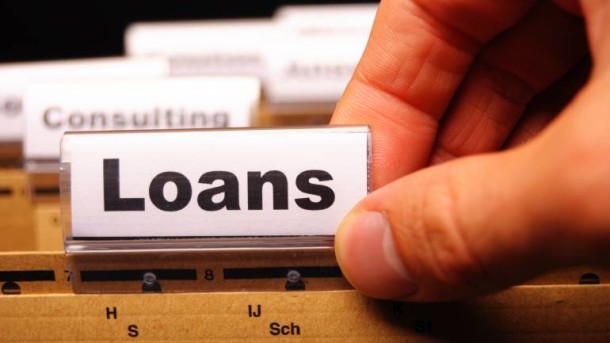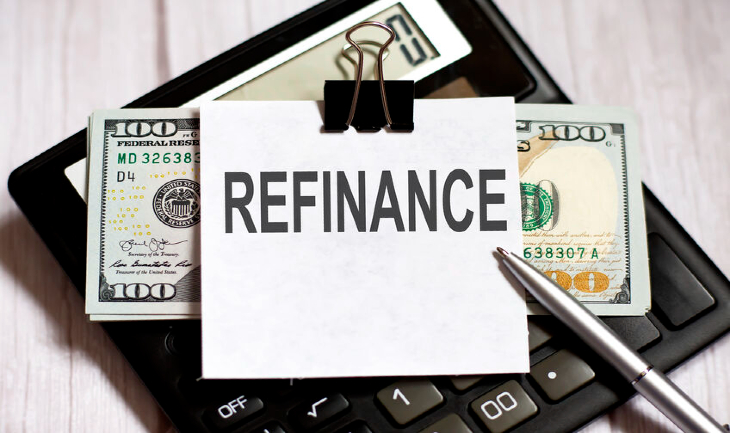
For those who’ve purchased a home, the price of your living quarters could set your finances back by a hefty amount. When you factor in miscellaneous expenses such as stamp duty fees, agent fees, and interest on your bank loans, things can really add up. That’s why it’s important to make every penny count.
Speaking of interest loans, did you know that the United States Federal Reserve has increased interest rates and six more hikes are expected for the rest of 2022? Singaporean homeowners can expect to fork out more money for their existing loans. But there is a way you can save: refinancing your home loan.
One of the ways to save some money is to refinance your home loan. In this refinancing 101 guide, we’ll cover the basics to get you on the right track!

Interest rates are set to rise in 2022, so act now! Refinance your home loan to secure record low mortgage rates while you still can.
Check out SmartRefi to track your mortgage against daily rates and be notified of the best times to refinance, or speak to PropertyGuru Finance mortgage experts for unbiased advice and recommendations.
What Is Home Loan Refinancing?
Put simply, to refinance is to replace your existing property loan with a new one. This is usually done when the new housing loan offers more favourable terms.
For example, you may refinance your HDB housing loan (e.g. 2.6%) to a bank loan that offers a lower interest rate (e.g. 1.5%). Read more about refinancing your HDB loan here: How to Refinance from HDB Housing Loan to Bank Loan
You may also choose to move from one bank to another bank once your lock-in period is over and your existing plan’s interest rate goes up.
Related article: Refinancing Your Home Loan: 3 Reasons Why Lock-In Periods Aren’t Always Bad
Refinancing vs Repricing
Often confused with refinancing, repricing is when you switch to a new home loan package, but with the same bank. Read more about the key differences here: Should you reprice or refinance?
Related article: 9 Ways Singaporeans Pay for Their Home Loans: HDB vs Bank Loan, Cash vs CPF and More
How Does Refinancing Work?
You might have Googled “How does refinancing work?” Here’s your answer. How refinancing works is that when your application for a refinance property loan with Bank B is approved, Bank B will proceed to pay off your existing mortgage with Bank A, and bring over the prior loan balance.
For Example…
Say, in 2017 you took a property loan with Bank A at 1.8% (3-year fixed rate). Now that the three years is over, the rates have gone up to over 2%. At this point, you still owe Bank A $300,000.
Thinking that this is too expensive to service the rest of your debt, you decide to shop around and found that Bank B is offering interest rates of 1.5% (3-year fixed rate). Hence, you decide to apply to refinance to Bank B.
If your refinancing application is approved, Bank B will pay Bank A the $300,000 that you owe. You will no longer owe Bank A any money; instead, you will owe Bank B $300,000 under the terms of the new loan. The loan is essentially ‘transferred’ to Bank B.

When Should You Refinance Your Home Loan?
Typically, homeowners refinance in order to lower their monthly repayments and/or interest costs by taking advantage of lower interest rates and/or shortening their housing loan tenure. Those with private properties also sometimes refinance to to take a home equity loan (also known as cash-out refinancing).
You can work out whether it makes sense to refinance by calculating your potential savings. Based on the above-mentioned example…
|
Existing Home Loan |
New Home Loan |
|
|
Amount owed |
$300,000 |
$300,000 |
|
Interest rate |
2% |
1.5% |
|
Monthly repayments (assuming 25-year tenure) |
$1,271.56 |
$1,199.81 |
|
Savings |
– |
$71.75 per month |
|
Savings after three years |
– |
$2,583 after 36 months |
As you can see, in this case, refinancing will save you a significant sum. Assuming a 25-year tenure, if you do not refinance, you can expect to pay $1,271.56 per month when Bank A’s interest rates rise. If you do refinance to Bank B at 1.5%, you will only need to pay $1,199.81 monthly. That’s $71.75 less per month, and $2,583 saved after three years!
Of course, this is a very simplistic illustration, and the actual amount saved will depend on things like your outstanding balance, preferred tenure, etc. You’ll also need to factor in refinancing costs, such as legal and valuation fees… Which bring us to our next point.
Do You Need to Pay to Refinance?
Yes, there are certain costs involved with refinancing your home loan. The two main fees are 1) legal fees and 2) valuation fees. Added up, these can cost up to $3,000. However, many times, banks will offer to subsidize these costs to incentivise homeowners to refinance.
For example, if you’re refinancing from Bank A to Bank B, Bank B may offer you a $2,000 subsidy to help lower the costs. Subsidies often come with a clawback clause though, which stipulates that you can’t refinance again for a few years (unless you pay back the subsidy).
Depending on the terms of your existing home loan, there may also be other costs like prepayment penalties and/or cancellation fees. To be sure, it is best to check with your current bank whether these charges will apply should you decide to refinance.
So given the costs involved, should you still consider refinancing?
Refinance Home Loan: Is it Good or Bad?
This is a tricky question as it largely depends on your unique situation, but generally, you can calculate your potential savings (as above) to help you decide if you should refinance. Factor in both your costs of refinancing and how much you can expect to save in monthly repayments.
Again, using the same example…
- Expected refinancing cost:
$1,500 legal fee + $300 valuation fee = $1,800 - Bank B’s subsidy: $2,000
- Expected savings after three years: $2,583 – $1,800 + $2,000 = $2,783
Related article: Does Refinancing Always Save You Money?
As illustrated above, there are many instances when refinancing your loan can result in significant savings. Generally, those with HDB loans consider refinancing after a few years when they’ve paid off at least 25% of their property’s price (because most people can only borrow up to 75% from banks). Those with bank loans typically explore refinancing once their lock-in periods are over (so they can switch to another bank without having to pay any penalties).
If you need personalised recommendations on whether it’s worth it for you to refinance your home loan, check out PropertyGuru Finance. Our expert home finance advisors are happy to help (with no strings attached!).
Related article: HDB Refinancing Story: After 9 Years, This Singaporean Couple Finally Decided to Refinance their HDB Loan
How to Refinance Your Home Loan
‘Refinancing’ sounds complicated, but it’s actually a very straightforward process – especially with PropertyGuru Finance ready to do the heavy lifting for you. Here are the steps to refinancing:
- Check that it is a good time for you to refinance your home loan.
- Reach out to PropertyGuru Finance for recommendations.
- You may also compare interest rates on your own if you wish.
- Decide on your preferred home loan.
- If you’ll let us, we will help you with the refinancing application from hereon!
All you’ll need to do is prepare the necessary documents (see our refinancing checklist here).

Thinking of getting a bank home loan? Compare the best mortgage rates on PropertyGuru Finance, or contact us for more personalised advice and recommendations:
Disclaimer: Information provided on this website is general in nature and does not constitute financial advice.
PropertyGuru will endeavour to update the website as needed. However, information can change without notice and we do not guarantee the accuracy of information on the website, including information provided by third parties, at any particular time. Whilst every effort has been made to ensure that the information provided is accurate, individuals must not rely on this information to make a financial or investment decision. Before making any decision, we recommend you consult a financial planner or your bank to take into account your particular financial situation and individual needs. PropertyGuru does not give any warranty as to the accuracy, reliability or completeness of information which is contained in this website. Except insofar as any liability under statute cannot be excluded, PropertyGuru, its employees do not accept any liability for any error or omission on this web site or for any resulting loss or damage suffered by the recipient or any other person.
More FAQs About Home Loan Refinancing Singapore
When Should I Refinance My HDB Loan?
You can refinance HDB loans any time, but most HDB homeowners refinance after 4 to 5 years. This is after they have paid off at least 25% of the property’s value/price so that they would not need to pay any more cash.
Is There Any Lock-In Period for HDB Loan?
Unlike bank loans, an HDB loan refinance do not have any lock-in period. You are free to redeem it or refinance your loan any time.
How Long Does It Take for An HDB Loan Refinance to Go Through?
How long HDB refinancing takes may depend on the volume of applications received by the bank, as well as their individual processing times. However, it generally takes 4 to 6 weeks to complete.

